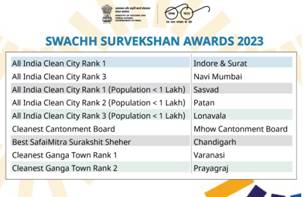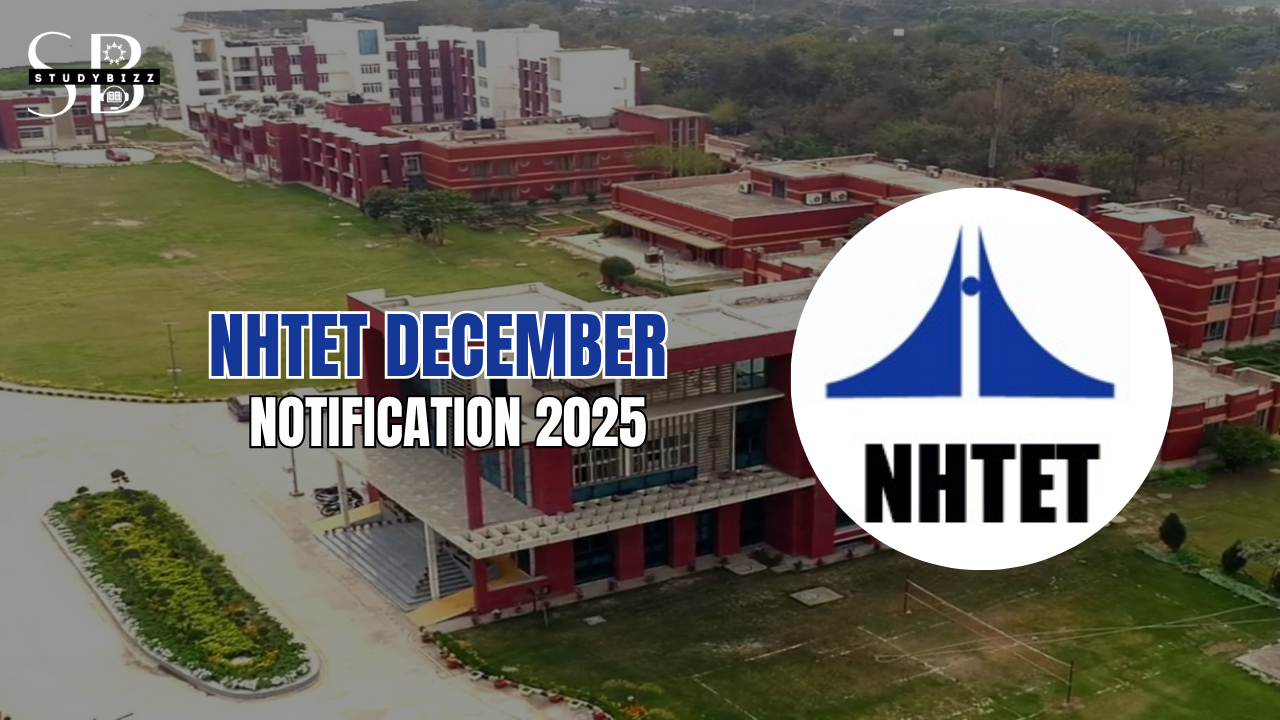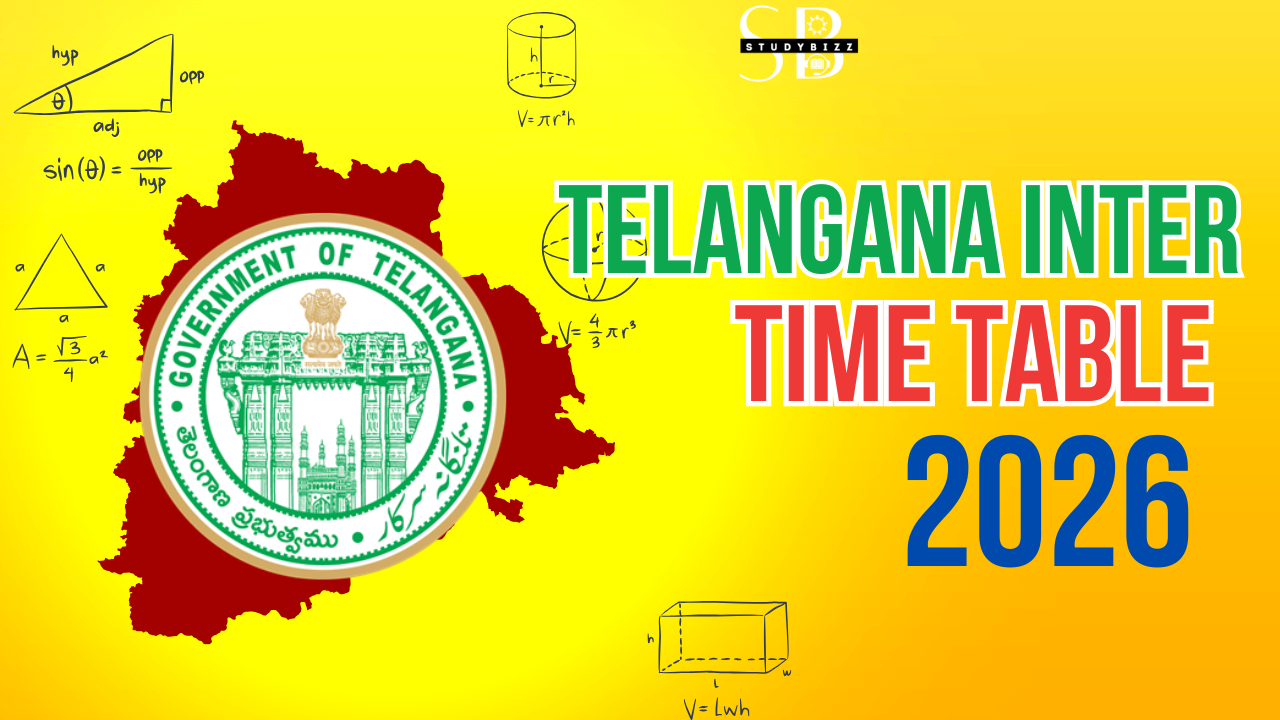Cleanliness is one of the crucial parameters for assessing a country’s social and economic infrastructure. Global institutions such as the World Health Organization (WHO) and the World Economic Forum (WEF) stressed the role of sanitation and hygiene in a country’s growth. Notably, the government’s Swachh Bharat Abhiyan and Swachh Survekshan Awards created mass awareness about cleanliness in India.
Swachh Survekshan or Cleanliness Survey debuted in 2016 and is administered by the Quality Council of India (QCI). This survey is conducted annually, and the results are primarily based on three factors namely, certification, citizen’s feedback, and waste management policies. The cleanliness survey evaluates the cities based on the data provided by the local municipal bodies, independent assessment, and citizen feedback.
List of cleanest cities in India
The Union Ministry of Housing and Urban Affairs (MoHUA) announced the results of the Swachh Survekshan Awards 2023 on 11th January 2024. As per the survey, Madhya Pradesh again secured the rankings with two of its major cities Indore and Bhopal in the 1st and 5th position. Andhra Pradesh on the other hand retained three of its cities in the top 10.
| Ranking | 2023 | 2022 | 2021 |
| 1 | Indore & Surat | Indore | Indore |
| 2 | NA | Surat | Surat |
| 3 | Navi Mumbai | Navi Mumbai | Vijayawada |
| 4 | Visakhapatnam | Visakhapatnam | Navi Mumbai |
| 5 | Bhopal | Vijayawada | NDMC |
| 6 | Vijayawada | Bhopal | Ambikapur |
| 7 | NDMC | Tirupati | Tirupati |
| 8 | Tirupati | Mysuru | Pune |
| 9 | Greater Hyderabad | NDMC | Noida |
| 10 | Pune | Ambikapur | Ujjain |
This time Surat bagged the top 1 position along with Indore. Surat was in 2nd position in the previous two consecutive years which now climbed to first position to share the ranking along with 7 times the cleanest city Indore.
Indore, Madhya Pradesh
Indore has retained its first rank to emerge as the cleanest city in India since the first edition of the cleanliness survey was launched. This is for the 7th time in a row, Indore retained its No.1 ranking. The city administration and citizens worked together to ensure that the street was not filled with litter, garbage, or open sewers. This is possible with the well-planned waste segregation, conversion, and disposal technique that the administration uses.
Surat, Gujarat
The diamond city of India has also emerged as the cleanest as per the latest cleanliness survey. The only Gujarati city to feature in this list uses top-notch cleanliness methodology to maintain its spotless streets and roads. Surat is the first Indian city that adopt 100 percent door-to-door solid waste collection coverage used to generate power for the city. Surat shares it’s first rank along with Indore.
Navi Mumbai, Maharashtra
The only city of Maharashtra to feature in the list is Navi Mumbai. The city has achieved this rank by using 3R. The 3R stands for reuse, recycling, and reducing. Besides, it has introduced many eco-friendly policies such as solid waste management, segregating wet and dry garbage, installing garbage decomposing facilities, plastic ban, waste processing, garbage-free water bodies, and stormwater drains.
Visakhapatnam, Andhra Pradesh
Visakhapatnam, also called Vizag is the largest city in the state of Andhra Pradesh retained its 4th rank for the consecutive year. The coastal city has significantly improved its rankings for the past few years. Visakhapatnam in Andhra Pradesh has launched an initiative called Eco-Vizag, which aims to advance the city of Visakhapatnam as an iconic city in terms of environmental sustainability and stable growth, focusing on five key aspects with Eco-Clean: Clean surroundings with effective waste management; as one of the key aspects.
Bhopal, Madhya Pradesh
Another city from Madya Pradesh and the capital city of the state climbed one position to settle down at fifth position in the swachh sarvekshan rankings. In the cleanliness survey, Madya Pradesh state’s largest city Indore, which is the cleanest city of the country, has got 98 percent marks on the source segregation parameter of waste. At the same time, Bhopal is 3 points behind Indore in terms of source segregation of waste. Bhopal is fulfilling only 95 percent of the parameters of source segregation of waste. However Bhopal which ranked number 2 in the first two swachh rankings later slipped to 19th position and it again improved its rankings but adjusted at second rank in the list.
Vijayawada, Andhra Pradesh
Vijayawada which falls under the metropolitan area of Amaravati, New capital of Andhra Pradesh state has managed to settle down at 6th position. However it’s noteworthy to mention that this city slipped one rank to settle down at 6th rank.
NMDC, New Delhi
New Delhi Municipal Council climbed two positions up to bag the seventh rank among cities with a population of over one lakh in the Swachh Survekshan rankings for 2023.
NDMC scored 99% for door-to -door collection of waste, 87% for segregation at source, 100% for waste processing, 100% for remediation at dumpsites, 93% for cleanliness of markets and residential areas, 100% for sanitation at public toilets and 100% for cleanliness of waterbodies.
How is the cleanliness survey done?
A cleanliness survey, also known as Swachh Survekshan, is conducted by MoHUA. The ministry announces the basic parameters that have to be kept in mind while judging the cleanliness of an Indian city. Talking of the methodology, as per the latest toolkit the survey is done for 7,500 marks. There are three parameters: service level progress for 3,000 marks, citizens’ voice, and certification for 2,250 marks each. Here are the details of all three parameters:
Service level progress
The service level progress accounts for 3,000 marks and includes three criteria, segregated collection, sustainable sanitation & SafaiMitra Suraksha, and processing & disposal. This parameter has eight indicators and is entirely dedicated to the collection and disposal of dry and wet waste.
| Criteria | Total marks |
|---|---|
| Segregated collection | 900 marks |
| Processing & Disposal | 900 marks |
| Processing & disposal | 1,200 marks |
Citizens’ voice
This parameter accounts for 2,250 marks and mainly includes getting feedback from the citizens regarding the waste management policies introduced by the administration. Here is the detailed mark breakup for this parameter:
| Scheme of ranking | Marks |
|---|---|
| Citizen feedback | 600 |
| Engagement | 650 |
| Experience | 325 |
| SwachhataApp | 400 |
| Disaster/epidemic response preparedness | 200 |
| Voice of freedom fighters | Nil |
| Innovation | 75 |
Certification
Certification is the last parameter that has to be considered for the cleanliness survey. The 2,250 marks assigned to this parameter are further bifurcated into two certifications namely, star rating and open defecation (ODF) status. Here is the mark breakup for the factors considered by the administration.
Certified GFC star rating status (1250 Marks)
| Scheme of Ranking | Total Marks |
|---|---|
| 7 star city (water+ mandatory) certified | 1250 |
| 3-star city (water+ mandatory) certified | 1050 |
| 1-star city (water+ mandatory) certified | 600 |
| 1 star city (water+ mandatory) certified | 400 |
Certified ODF status (1,000 Marks)
| Scheme of ranking | Total marks |
|---|---|
| Water+ city certified | 1,000 |
| ODF++ city certified | 600 |
| ODF++ city certified | 400 |
| ODF++ city certified | 200 |
Cleanliness is a crucial factor that paints a positive image on visitors and goes a long way in evolving a healthy environment for residents. It has received a shot in the arm with the annual Swachh Survekshan survey by the Central government. Hopefully, we will witness more clean cities in the country.





Leave a Reply